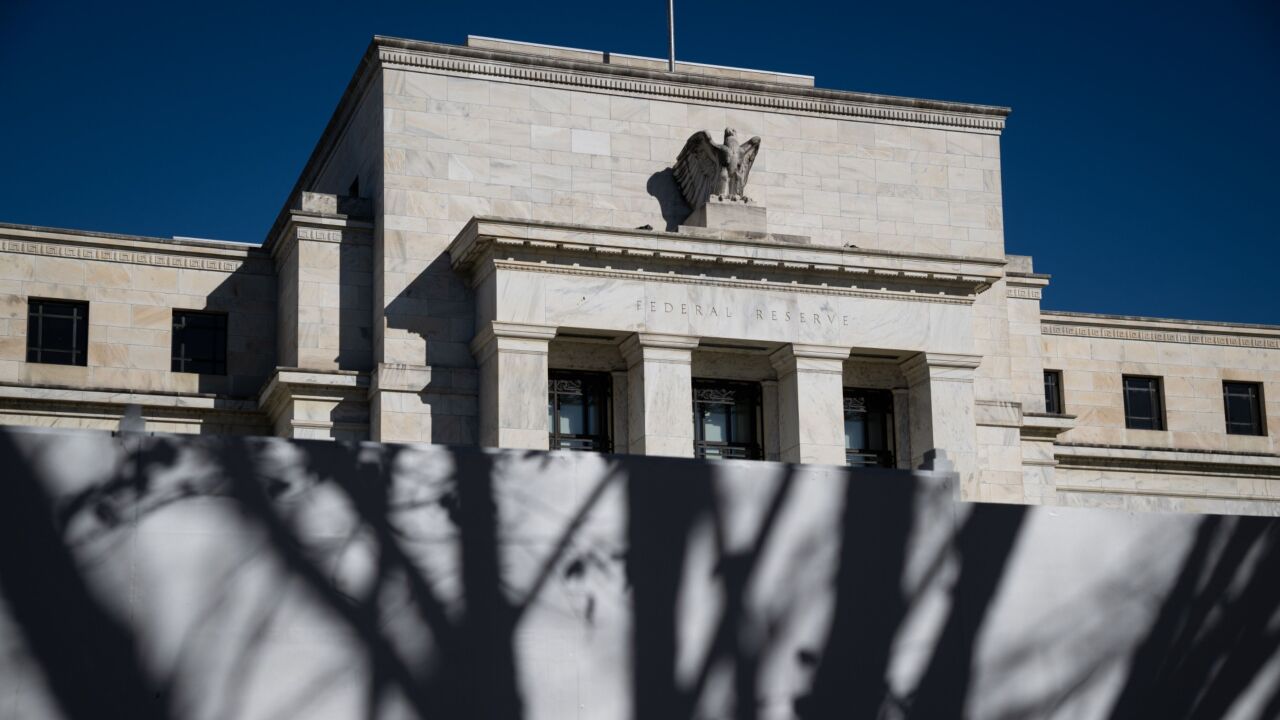[IMGCAP(1)]
Despite an unsteady economy, debit card issuers predict a combined 7% transaction-growth rate for PIN- and signature-debit this year, according to the Pulse electronic funds transfer network's 2009 Debit Issuer study released last week.
That rate may turn out to be higher if consumers continue to choose debit as the economy falters, observers say. "[Seven percent] shows consumers are using debit cards for really a large portion of their everyday necessary expenses, and I think that will continue," says Cindy Ballard, Pulse executive vice president.
New York-based management-consulting firm Oliver Wyman surveyed 73 financial institutions for Houston-based Pulse, which is owned by Discover Financial Services.
Together, the participants issue 94 million debit cards and operate 61,000 ATMs.
The financial institutions, which include large banks, community banks and credit unions, experienced 8% overall transaction growth in their debit card programs between July and December 2008. PIN-debit transaction volume grew 15%, while signature-debit volume grew by 4%.
One large bank attributed the growth to greater consumer confidence in the economy during that period, according to the report.
Consumers continue to prefer to use debit cards for small-ticket purchases, the study found. Twenty-seven percent of all debit purchases last year were for less than $10. "We've seen a shift from higher-value merchant categories like casual dining to groceries, which have lower tickets," a large bank notes in the report.
Gas-price drops after September also helped to significantly reduce the average ticket size, another large bank said in the report.
Average ticket size is a new category Pulse is tracking, according to Ballard.
Debit card penetration, which the report defines as the percentage of eligible accountholders who have a debit card, was 73% in 2008, that same as in 2007.
"Best-in-class" issuers had an average penetration rate of 91%. Instant debit card issuing at branches may help improve card penetration and active rates, the report suggests.
Financial institutions continue to use multiple definitions of an "active debit card." The number of issued cards used "actively" in 2008 was 66.1% under the expanded definition of active cards those used to conduct any transaction during the previous 30 days.
Earlier studies defined active cards as those used to make any signature-debit purchases during the previous 30 days. Under that definition, debit card active rates declined to 56% last year from 59% in 2007.
Despite increasing fraud attempts in 2008, fraud loss rates per debit card decreased compared with 2007.
The signature-debit loss rate dropped to $1.81 per card from $1.92 the previous year. The PIN-debit loss rate decreased to 15 cents per card from 19 cents.the previous year. The study revealed fewer financial institutions mass re-issued cards following a data breach in 2008. "What we're seeing is that the industry is working very diligently in preventing payment card fraud, and that is having an affect," Ballard says.
Of the financial institutions surveyed, 57% reissue cards depending on the type of data compromised. Thirty-seven percent of issuers monitored fraud activity on compromised cards to determine whether reissuing was necessary, the report says. The study notes most of those issuers are large banks that have more- sophisticated fraud-detection systems. ATM transactions per active card declined to 3 in 2008 from 3.4 the previous year, according to the report.
Issuers say they anticipate a further decline in card use at ATMs as consumers seek to avoid paying surcharge and foreign fees. The percentage of issuers that participated in a surcharge-free ATM network declined to 53% in 2008 from 56% in 2007, as to large banks withdrew their participated. Thirty-one percent of large banks participated in a surcharge-free ATM network, down from 47% that did in 2007. ATM





